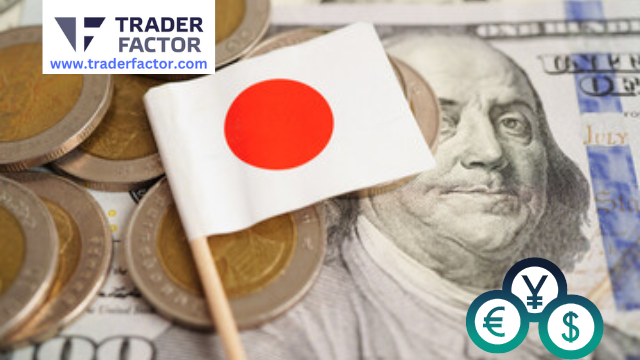Are you a forex trader looking to enhance your trading strategy and maximize your profit potential? If so, understanding and utilizing the forex flag pattern trading strategy can be a game-changer for you.
In this discussion, we will explore what the forex flag pattern is, why it is important for traders, and how you can effectively trade this pattern to capitalize on market opportunities.
Forex Flag Pattern Steps
Understanding the Forex Flag Pattern
The forex flag pattern is a continuation pattern that occurs within a trending market. It represents a brief pause or consolidation before the market continues in the direction of the prevailing trend. This pattern is characterized by two parallel trendlines, forming a rectangle or “flag” shape.
Identifying the Flag Pattern
To successfully trade the forex flag pattern, it is crucial to identify the pattern accurately. Look for a strong price move, known as the “pole,” which indicates the initial trend. Following the pole, there should be a period of consolidation where the price forms the flag shape. This consolidation period is marked by decreasing volume and smaller price swings.
Trading the Forex Flag Pattern
Once you have identified the flag pattern, you can enter trades based on specific breakout strategies. Traders often wait for a breakout above or below the flag pattern to confirm the continuation of the trend. This breakout can be accompanied by an increase in volume, indicating the resumption of market momentum.
Risk Management in Flag Pattern Trading
Managing risk is a crucial aspect of any trading strategy. When trading the forex flag pattern, consider setting appropriate stop-loss levels to protect your capital in case of a trend reversal. Additionally, adjust your position size based on your risk tolerance and the strength of the pattern.

Fine-Tuning Your Flag Pattern Strategy
To improve the effectiveness of your flag pattern trading strategy, consider incorporating additional technical indicators such as moving averages, oscillators, or Fibonacci retracement levels. These tools can provide further confirmation of the pattern and enhance your trading decisions.
Real-Life Examples of Successful Flag Pattern Trades
To illustrate the power of the forex flag pattern, we will analyze real-life examples of successful trades using this strategy. By examining these examples, you can gain insights into how to identify and trade the flag pattern effectively.
Flag Components of Forex Flag Pattern

The Forex flag pattern is a powerful technical analysis tool that can help traders identify potential continuation patterns within trending markets. Understanding the components of the flag pattern is crucial for effectively trading this pattern and maximizing profit potential. In this section, we will delve into the key components of the forex flag pattern and explore trending strategies that traders can employ.
Flagpole
The flagpole is the initial move or trend that precedes the formation of the flag pattern. It represents a significant price movement in either an upward or downward direction. The length of the flagpole can vary, but it is typically characterized by strong momentum and volume.

Flag
The flag is the consolidation phase that follows the flagpole. It is characterized by a period of price consolidation within a narrow range, forming a rectangle or channel shape. The flag acts as a temporary pause or breather before the market resumes the trend established by the flagpole.
Trending Strategies for the Forex Flag Pattern

Traders can employ different strategies when trading the forex flag pattern, depending on their trading style and market conditions. Here are some common trending strategies:
Breakout Strategy
One popular approach is to wait for a breakout above or below the flag pattern. Traders may enter a long position when the price breaks out above the upper trendline of the flag pattern, signaling a continuation of the bullish trend. Conversely, a breakout below the lower trendline of the flag pattern may indicate a continuation of the bearish trend, prompting traders to enter a short position.
Trend Continuation Strategy
Another strategy focuses on trading in the direction of the prevailing trend. Traders using this approach would enter positions that align with the original trend indicated by the flagpole. For example, if the flagpole is an upward trend, traders would look for opportunities to enter long positions during the flag consolidation period.

Reversal Strategy
While the forex flag pattern is primarily a continuation pattern, there may be instances where it signals a potential trend reversal. Traders who follow a reversal strategy would look for specific confirmation signals, such as a break of the flag pattern in the opposite direction of the initial trend, to enter positions that anticipate a reversal.
Technical Analysis Techniques to Use with the Forex Flag Pattern

Once you have identified the forex flag pattern, incorporating additional technical analysis techniques can further enhance your trading strategy. In this section, we will explore several techniques that can be used in conjunction with the flag pattern to increase the accuracy of your trades and improve your overall profitability.
Price Action Analysis
Price action analysis is a technique that focuses on studying the movement of price alone, without the use of indicators or oscillators. By observing how the price behaves within the flag pattern, you can gain valuable insights into market sentiment and potential future price movements. Look for patterns such as bullish or bearish candlestick formations, trendline breaks, or support and resistance levels to confirm or validate your flag pattern trade setups.
Moving Averages
Moving averages are widely used indicators that help smooth out price data and identify trends. When trading the flag pattern, you can use moving averages to confirm the direction of the primary trend. For example, if the price is above a rising 50-day moving average, it indicates a bullish trend, supporting your long trades when the flag pattern forms. Conversely, if the price is below a declining moving average, it suggests a bearish trend, favoring short trades.

Fibonacci Retracements
Fibonacci retracements are based on mathematical ratios that can help identify potential support or resistance levels. After a strong price move (the pole), you can apply the Fibonacci retracement tool to measure the percentage retracement of the flag pattern. Look for confluence between the retracement levels and other technical factors, such as trendlines or moving averages, to identify key areas where price is likely to bounce and continue in the direction of the trend.
Bollinger Bands
Bollinger Bands are volatility-based indicators that consist of a simple moving average and upper and lower bands that are calculated based on standard deviations. When the price is within the flag pattern, Bollinger Bands can help identify periods of low volatility. A breakout above the upper band or below the lower band can signal a resumption of volatility and the continuation of the trend, providing an additional confirmation for your flag pattern trades.
Relative Strength Index (RSI)
The Relative Strength Index (RSI) is a popular momentum oscillator that measures the speed and change of price movements. When trading the flag pattern, you can use the RSI to assess overbought or oversold conditions. If the RSI reaches extreme levels, such as above 70 or below 30, it may indicate a potential reversal or continuation of the trend. Consider using the RSI in combination with other technical indicators to confirm your flag pattern trades.

By integrating these technical analysis techniques with the forex flag pattern, you can increase your confidence in trade setups and make more informed trading decisions. However, it’s important to remember that no strategy is foolproof, and risk management remains crucial. Always conduct thorough analysis, practice proper risk management, and consider multiple factors before executing any trades.
Common Mistakes to Avoid when Trading the Forex Flag Pattern

When it comes to trading the forex flag pattern, there are several common mistakes that traders should avoid in order to increase their chances of success. By being aware of these pitfalls and taking proactive measures to address them, you can enhance your trading strategy and minimize unnecessary risks. Let’s explore some of the most prevalent mistakes and how to avoid them:
Failing to confirm the pattern’s validity
One of the biggest mistakes traders make is jumping into a trade based solely on the appearance of a flag pattern without confirming its validity. It is essential to verify that all the necessary components of the pattern are present, such as the pole, consolidation period, and breakout. This confirmation significantly increases the probability of a successful trade.

Failing to use appropriate risk management strategies
Another common mistake is neglecting proper risk management techniques when trading the forex flag pattern. It is crucial to set appropriate stop-loss orders to limit potential losses if the trade goes against you. Additionally, consider using proper position sizing and diversification to manage risk effectively and protect your trading capital.
Overtrading
Overtrading is a common pitfall that can lead to losses when trading the forex flag pattern. Being patient and selective about the trades you take is essential. Avoid the temptation to enter multiple trades simultaneously or trade every flag pattern that you come across. Instead, focus on high-quality setups that meet your criteria and have a higher probability of success.
Failing to adapt to changing market conditions
Market conditions can change rapidly, and it is crucial to adapt your trading strategy accordingly. Failing to adjust your approach when market dynamics shift can result in missed opportunities or losses. Stay informed about economic news, geopolitical events, and other factors that can influence currency markets. Flexibility and adaptability are key traits of successful traders.

Ignoring fundamental factors
While technical analysis plays a significant role in trading the forex flag pattern, it is important not to overlook fundamental factors. Economic indicators, central bank policies, and geopolitical events can have a substantial impact on currency movements. Ignoring these factors or failing to incorporate them into your analysis can lead to poor trading decisions.
By avoiding these common mistakes and focusing on thorough analysis, proper risk management, and adaptability, you can increase your chances of success when trading the forex flag pattern.
How to Adjust the Forex Flag Pattern Strategy

The forex flag pattern trading strategy can be adjusted and fine-tuned to suit individual trading preferences and market conditions. Here are some ways you can adjust the strategy to enhance your trading success:
Change the Time Frame
The forex flag pattern can appear on various time frames, from shorter ones like the 5-minute chart to longer ones like the daily or weekly chart. Adjusting the time frame can provide different perspectives on the pattern and help you identify more reliable signals. Experiment with different time frames to find the ones that align with your trading style and objectives.
Use Additional Technical Indicators
While the forex flag pattern can be a standalone strategy, incorporating additional technical indicators can provide confirmation and enhance your trading decisions. Consider using indicators such as moving averages, oscillators, or Fibonacci retracement levels to validate the flag pattern and identify potential entry and exit points.

Adjust Stop-loss and Take-profit Levels
Managing risk is crucial in forex trading. When trading the flag pattern, you can adjust your stop-loss and take-profit levels based on the characteristics of the pattern and market conditions. The distance between the support and resistance lines within the flag pattern can serve as a guide for setting your profit target. Measure this distance and use it as a reference to determine your take-profit level. Additionally, set a stop-loss level below the low (for long trades) or above the high (for short trades) of the flag pattern to protect your capital.
Incorporate Fundamental Analysis
While technical analysis plays a significant role in flag pattern trading, incorporating fundamental analysis can provide valuable insights into market trends and potential catalysts. Keep an eye on economic news releases, central bank announcements, and geopolitical events that may impact currency pairs associated with the flag pattern. By combining technical and fundamental analysis, you can make more informed trading decisions.

Consider a Different Trading Strategy
If you find that the forex flag pattern strategy is not yielding the desired results, consider exploring alternative trading strategies that align with your trading style and risk tolerance. Some traders may prefer breakout strategies, where they enter trades once the price breaks above or below the flag pattern. Others may opt for trend continuation strategies, where they ride the prevailing trend after the flag pattern consolidation. Reversal strategies can also be used when the flag pattern signals a potential trend reversal. Explore different approaches to find the one that suits you best.
Key Highlights

A continuation pattern is a key element in any trading strategy, as it helps traders identify potential opportunities to profit from the ongoing trend. One such continuation pattern is the flag pattern, which consists of two components: the flag pole and the consolidation period. In a bearish flag pattern, a sharp price move, known as the flag pole, precedes a consolidation period where the price forms a bear flag shape.
Traders can enter short positions once the price breaks below the lower trend line, with a stop loss set above the flag pattern to manage risk. Conversely, in a bullish flag pattern, the flag pole represents a strong upward trend, followed by a consolidation period forming a bull flag. Traders can enter long positions when the price breaks above the upper trend line, while setting a stop loss below the flag pattern to protect against potential reversals.
By analyzing chart patterns and monitoring price action, traders can effectively capitalize on trading flags to enhance their overall profitability.

FAQs on Forex Flag Pattern Trading Strategies
What is the Forex flag pattern trading strategy?
The Forex flag pattern trading strategy is a technical analysis approach used by traders to identify potential continuation patterns within trending markets. It consists of a flagpole, representing a strong price move, followed by a flag formation, indicating a temporary consolidation before the market resumes the trend.
How can I identify the flag pattern in Forex trading?
To identify the flag pattern, look for a strong price move (flagpole) followed by a period of consolidation (flag). The flag should be characterized by two parallel trendlines forming a rectangular or channel shape. Decreasing volume and smaller price swings are common characteristics of the flag pattern.
How do I trade the Forex flag pattern?
One approach is to wait for a breakout above or below the flag pattern to confirm the continuation of the trend. Traders may enter long positions when the price breaks out above the upper trendline and short positions when it breaks out below the lower trendline. Other strategies include trend continuation and reversal approaches.

What is a breakout strategy in Forex flag pattern trading?
A breakout strategy involves entering trades when the price breaks out of the flag pattern in the direction of the trend. Traders may wait for a breakout above the upper trendline to enter long positions or a breakout below the lower trendline to enter short positions.
How does risk management factor into Forex flag pattern trading?
Risk management is crucial in any trading strategy, including Forex flag pattern trading. Traders should set appropriate stop-loss levels to protect their capital in case of a trend reversal. Position sizing and proper risk assessment are also important considerations.
Are there specific indicators that can complement Forex flag pattern trading?
Yes, traders often use additional technical indicators such as moving averages, oscillators, or Fibonacci retracement levels to confirm the flag pattern and enhance their trading decisions. These indicators can provide further insights into market conditions and improve the effectiveness of the trading strategy.
Can the Forex flag pattern indicate a trend reversal?
While the Forex flag pattern is primarily a continuation pattern, there may be instances where it signals a potential trend reversal. Traders who follow a reversal strategy look for specific confirmation signals, such as a breakout in the opposite direction of the initial trend, to enter positions anticipating a reversal.

Are there real-life examples of successful flag pattern trades?
Yes, real-life examples of successful flag pattern trades can be found in various sources and case studies. Analyzing these examples can provide insights into how traders identify and trade the flag pattern effectively.
What role does volume play in Forex flag pattern trading?
Volume plays a significant role in Forex flag pattern trading. When volume increases during a breakout of the flag pattern, it can provide confirmation and indicate the resumption of market momentum. Traders often look for volume confirmation to validate their trading decisions.
Is the Forex flag pattern trading strategy suitable for all traders?
The Forex flag pattern trading strategy can be suitable for traders of different experience levels. However, it is important to practice and continuously learn while using this strategy. Demo accounts and backtesting can be valuable tools for refining skills before implementing the strategy with real money.

Conclusion
In, understanding the components of the forex flag pattern, such as the flagpole and flag, is essential for successful trading. Utilizing trending strategies like breakout, trend continuation, and reversal can help traders capitalize on this pattern. Additionally, incorporating technical analysis techniques like price action analysis, moving averages, Fibonacci retracements, Bollinger Bands, and the Relative Strength Index (RSI) can further enhance trading strategies. Remember to combine these strategies with proper risk management techniques and thorough analysis for optimal results.
Read These Next
The Winning Mindset for Weekend Forex Trading
Essential Education for Taxes on Forex Trading
What is a Margin Level in Forex?
Forex Breakout Strategy: A Guide for Profitable Trading
Forex Consolidation Breakout Strategies for Traders
Disclaimer:
All information has been prepared by TraderFactor or partners. The information does not contain a record of TraderFactor or partner’s prices or an offer of or solicitation for a transaction in any financial instrument. No representation or warranty is given as to the accuracy or completeness of this information. Any material provided does not have regard to the specific investment objective and financial situation of any person who may read it. Past performance is not a reliable indicator of future performance.
Author
-

Phyllis Wangui is a Financial Analyst and News Editor with qualifications in accounting and economics. She has over 20 years of banking and accounting experience, during which she has gained extensive knowledge of the forex, stock news, stock market, forex analysis, cryptos and foreign exchange industries. Phyllis is an avid commentator on these topics and loves to share her insights with others through financial publications and social media platforms.
View all posts













